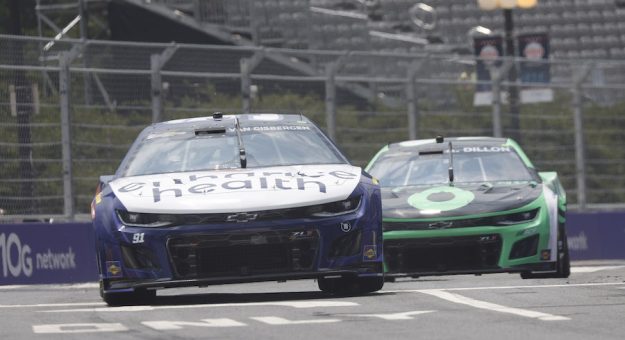CONCORD, N.C. — The inaugural Chicago Street Race was a spectacle not seen in many, many years.
In a grand departure from its usual scheduling, the sanctioning body provided an opportunity for residents of the nation’s third largest city to see NASCAR racing up-close and personal, and while the weather was not a friend, it certainly made for an interesting day.
When the race was announced, I was skeptical. Full-size stock cars on a street course? How was this going to work? Regular road courses — Watkins Glen, Road America, Sonoma — are big places, with plenty of runoff and not a lot of walls.
This was the opposite, more a course for Indy cars, F-1 or sports cars than for full-blooded NASCAR machines, even with the Next Gen car, and I thought that was going to be … interesting.
It was, indeed.
The rain was one factor, as it wasn’t a sprinkle or a shower. Growing up in the Midwest as I did — my hometown was once dubbed “Little Chicago,” by the way — I know what storms are capable of, and it was a classic Midwestern summer storm.
Yes, there was a fair amount of rain-induced chaos and I’ve never seen quite that many cars UNDER a tire barrier, but it somehow seemed to work from a competition point of view, in my opinion.
Take world-class oval racers in bigger, less nimble cars, put them on a course cobbled out of city streets, throw in the historic sights of Chi-Town and let it rip.
It worked for me.
Yes, I know the stop-and-start nature of it was not all that pleasing, but come on … it’s NASCAR in a big city.
I’m old enough to remember the first inklings of a planned NASCAR (and Indy car, for that matter) race in Manhattan. That was floated for many years as an ultimate destination. Would it have worked? Probably not, because unless the course was in Central Park, I don’t think there is enough room in Manhattan for something like that, even for Indy cars.
There were problems, sure. Any time you shut down a major city to that extent, there’s going to be trouble. Shoehorning the course into Grant Park was a stroke of genius, and there were even elevation changes thanks to the bridges.
The racing, when it was underway, was different, too. Ninety-degree corners are not easy for stock cars, but it somehow seemed to work. The fact that one or more corners narrowed from four lanes to one and a half at some places was a feature, not a bug.
The nature of the layout produced some stellar passing zones too, and that was a plus.
What really grabbed my attention in the rain-choked Cup Series race was how many of the NASCAR drivers were able to adapt quickly to all of this. Some, of course, did it better than others.
That leads us to the eventual winner.
Shane van Gisbergen was a rocket from the get-go, and well he should have been. A three-time Supercars champion from New Zealand, Van Gisbergen walked the dog in Grant Park. Of course, as ringers go, he was a likely candidate to do well, as Supercars are NASCAR Down Under, but the master class he put on over the final segment of the race was the stuff of legend.
Of course, the Supercars are famous for their racing at Bathurst, a 3.861-mile street circuit, in a 1,000-kilometer race every year since 1963. As it happens, Van Gisbergen has won it twice. The track has tight sections surrounded by walls, and they do race in the rain.
Game, set and match.
The drive he made to the lead in the closing stages was something to see, as his road-racing skills were no match for even the best of NASCAR’s elite. No slips, no wall contact, no chance for the regulars to catch him out.
The Chicago Street Race was a superb event, from a racing standpoint, and was the most fun I’ve had while watching a NASCAR race in quite some time. I hope it stays around another year or two.
This story appeared in the July 12, 2023 edition of the SPEED SPORT Insider.

